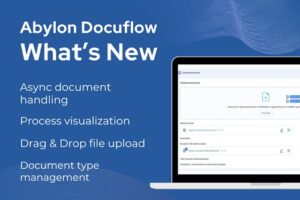Intro
In our latest blog post, we delve into the five most significant hurdles faced in the realm of financial planning, ranging from the tedious manual consolidation of Excel files to the daunting task of ensuring data quality. We’ll explore how these issues not only consume valuable time but also detract from the core activities that truly add value to your organization.
1 - Manual consolidation of Excel files

When your operation expands beyond a solo venture, financial planning becomes a collaborative effort. Initially, companies tend to plan using individual Excel files, which are later merged by controllers and FP&A (Financial Planning & Analysis) colleagues to create a comprehensive overview.
This is what I mean by “manual consolidation of Excel files”
While this is a standard process for startups and small companies (actually, below a given size it’s overkill to do it otherwise), it becomes inefficient under tight deadlines or when it proves too costly or labor-intensive.
2 - Resistance to New Planning Tools

This leads us to our next big problem. Once you decide to go further and change to a more sophisticated planning tool UI/UX problems arise. Let’s be honest: users who typically provide the initial data during the planning phase, have a day-time job and might be more familiar with Excel than a new, possibly web-based, tool designed for planning (the one you plan to replace Excel).
Learning a new tool just to input new data… That’s too inconvenient. Forcing this will potentially lead to conflicts, at least. (Not to speak of the costs of a web-based UI, and the development, and testing during the implementation phase of such a system)
3 - Challenges in Tracking Progress

Let’s say that you tackled the above. You created a data pipeline which can read from multiple files. You may be able to track, which file arrived when, and which has been consumed when. But, do you have a method, to keep track of which numbers have been approved?
Oh, you mean… This is part of the job who provides the files?
This means, you are not tracking the entire process, and you have no proof, if something has been approved, or not… Without a clear method to track approvals and updates, you lack visibility into the process.
Progression tracking in advanced tools facilitate better tracking of each data point’s status, ensuring a transparent and verifiable planning process.
4 - Your experts doing avoidable tasks

- Preparing the Excel files for the planners. Pulling the reports only relevant to them, and what they can see. This is what we call: Row Level Security
- Validating forecasted data on the granular level.
- Updating reports for planners after changes.
- Manually monitoring planning progress within the organization.
- Managing the planning process through continuous requests for files, corrections, and updates.
5 - Data Quality issues

Everybody makes mistakes. Manual processes are error-prone, and while manual error-checking can reduce mistakes, but since it is also carried out by humans means errors can still occur.
An effective system prevents flawed data being saved into the database, enhancing overall data integrity.
The Paramount Issue: Time

Ultimately, all of the above add up to one huge issue -> taking precious time away from you and your team. Time which could be a better spent on activities that add value to your organization, such as analyzing what happened, communicating the numbers, building narratives with the stakeholders, predicting the future.
We believe that being a true business partner like a CFO or a FP&A leader means focusing on these activities. Therefor it is a logical step to invest into a tool that solves all of the above problems, and maybe provides industry-specific solutions for you as well. Like a template and configuration possibilities to easily plan software licence sales.
Why Our FP&A Solution Stands Out?
Our Financial Planning Solution
- is Excel-based,
- has a mature core technology background,
- has a rich feature set, like:
– Master Data handling
– ETL processing,
– DataWarehouse building capabilities,
– Custom and Predefined Excel-templates,
– Common business logic taking care of the heavy lifting, and
– Software license sales – specific templates
Our Philosophy
- We don’t believe that “one-size-fits-all”.
- We believe that tech-people should do their part, and finance people should do theirs
- We believe in customizable, industry-specific templates
The Ultimate Value of Financial Planning
Everything else supports the above. What is everything else?
Analytics, Reporting, Month-end and Year-end closings, Planning and Forecasting.
More on Financial Planning and Analysis
For more information check out some of our other blogposts about the Rapid Platform and our FP&A solution Abylon Rapid Planner:

Author of the post:
Zsolt Kreisz - Financial Controller in the past, now BI Developer at Abylon Consulting. Linkedin Profile






